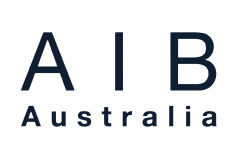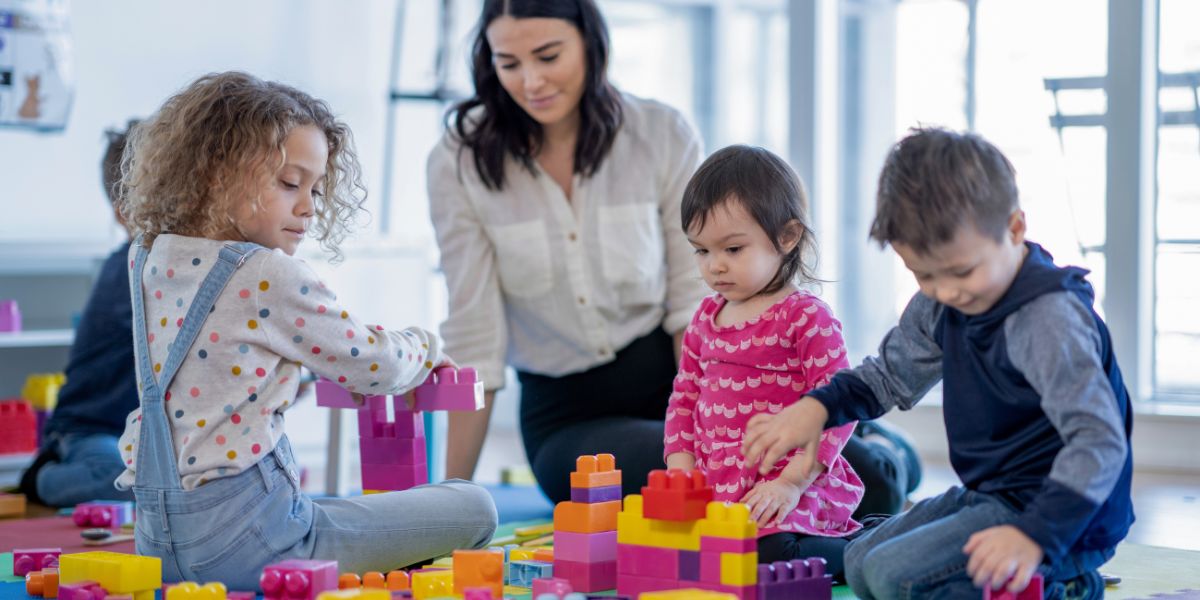Childcare centres play a crucial role in the early development of children, providing a safe and nurturing environment where they can grow and learn. However, ensuring the safety of children extends beyond physical care; it also includes protecting them from potential sexual abuse.
From a childcare insurance perspective, safeguarding against sexual abuse is a critical concern that requires a proactive and comprehensive approach. By implementing robust safeguarding measures, childcare centres not only protect the children in their care but also minimise potential liabilities and strengthen their position with insurers.
This guide aims to provide childcare centres with comprehensive strategies to safeguard children, ensuring their well-being and the trust of their families.
Understanding the Importance of Safeguarding
Sexual abuse in childcare settings, although rare, is a grave concern that can have lasting impacts on children, and even family members. It is vital for childcare centres to implement robust safeguarding measures to prevent such incidents. These measures not only protect children but also uphold the integrity and reputation of the childcare centre.
From an insurance perspective, safeguarding against sexual abuse in childcare centres involves a collaborative effort between the insurer, insurance broker and the childcare providers. We offer guidance, resources, and risk assessment tools to help centres implement effective safeguarding practices. Our shared objective is to create a secure environment where children can thrive, and childcare centres can operate with confidence.
Key Components of Safeguarding Against Sexual Abuse
-
Robust Recruitment Processes
- Formal Interviews: Undertake formal interviews for all candidates, including volunteers and contractors, for positions involving work with children or vulnerable adults. Analyse past experience working with these groups.
- Background Checks: Facilitate access to comprehensive background check services, including criminal record checks and working with children checks, to ensure all staff and volunteers are thoroughly vetted.
- References: Verify references and previous employment by enquiring with at least two previous employers regarding the candidate’s suitability for the position. Contact at least two referees supplied by the candidate.
- Employment Prohibition: Prohibit the employment or engagement of any person from working in your organisation if they have prior convictions relating to violent or sexually related offenses.
-
Comprehensive Training
- Regular Training Sessions: Provide regular training on safeguarding policies, recognising signs of abuse, and appropriate responses.
- Specialised Workshops: Offer specialised workshops led by experts in child protection and legal responsibilities.
- Continuous Professional Development: Encourage continuous learning and staying updated with the latest safeguarding practices and regulations.
-
Clear Policies and Procedures
- Safeguarding Policy: Develop and implement a clear safeguarding policy outlining the centre’s commitment to child protection, aligning with industry standards and legal requirements. Posting this policy on the centre’s website can help demonstrate to parents your commitment to child safety and transparency.
- Code of Conduct: Establish a code of conduct for all staff and volunteers, detailing appropriate behaviour and boundaries. Define boundaries for interactions between staff and children to prevent inappropriate behaviour, such as tickling, cuddling, and sitting on laps, which can be considered grooming for sexual abuse.
- Reporting Mechanisms: Create transparent and accessible reporting mechanisms for children, parents, and staff to report concerns. Actively encourage the reporting of sexual abuse and ensure that concerns are not dismissed when raised.
-
Creating a Safe Environment
- Design and Layout: Ensure the physical environment is designed to promote visibility and reduce opportunities for isolated interactions.
- Supervision: Maintain appropriate staff-to-child ratios and ensure constant supervision of children.
- Open Communication: Foster an environment where children feel safe to express their concerns and parents feel confident to discuss their child’s welfare. Commit to being an environment where either a victim or employee/volunteer feels able to report sexual abuse.
-
Engaging Parents and the Community
- Parental Involvement: Encourage parents to be involved in the centre’s activities and stay informed about safeguarding policies.
- Community Awareness: Raise awareness within the community about the centre’s safeguarding measures and the importance of child protection.
- Partnerships: Collaborate with local authorities, child protection agencies, and other childcare centres to share best practices and resources.
-
Monitoring and Evaluation
- Regular Audits: Conduct regular audits of safeguarding practices to ensure they are effective and up to date.
- Feedback Mechanisms: Implement feedback mechanisms for parents, staff, and children to provide input on safeguarding practices.
- Incident Reviews: Review any safeguarding incidents thoroughly to learn and improve future practices.
Developing a Comprehensive Client Protection Policy (CPP)
An effective Client Protection Policy (CPP) is essential for any childcare centre to safeguard against sexual abuse. This policy should include critical risk controls and reference the 10 National Principles for Child Safe Organisations. Key components of the CPP should include:
-
Leadership & Governance
- Commitment from Top Management: Ensure the centre’s leadership is committed to child protection and actively promotes a culture of safety.
- Clear Governance Structures: Establish clear governance structures and accountability mechanisms for safeguarding.
-
Effective Policies and Procedures
- Comprehensive Safeguarding Policy: Develop a detailed safeguarding policy that aligns with legal requirements and best practices.
- Operational Procedures: Implement procedures for daily operations that minimise risk and ensure child safety.
-
Recruitment and Training
- Vetting and Hiring: Implement rigorous vetting processes for all staff and volunteers, including background checks and reference verification.
- Ongoing Training: Provide continuous training for all staff on safeguarding practices and recognising signs of abuse, with relevant formal training and refresher courses held at least once a year.
-
Code of Conduct
- Behavioural Standards: Establish a clear code of conduct that outlines acceptable and unacceptable behaviour.
- Boundary Guidelines: Define boundaries for interactions between staff and children to prevent inappropriate behaviour, such as tickling, cuddling, and sitting on laps, which can be considered grooming for sexual abuse.
-
Incident Reporting and Response
- Reporting Mechanisms: Create transparent and accessible reporting mechanisms for any concerns or incidents.
- Response Procedures: Develop clear procedures for responding to allegations of abuse, including support for affected children and families.
- Independent Investigation: Appoint an independent person to investigate any incident of suspected sexual abuse.
- Documented Reporting Process: Establish a documented reporting process with escalating procedures. If an employee is under investigation (internally or by the police) for committing sexual abuse, it is crucial to consult with an HR lawyer or legal counsel to determine appropriate actions, which may include suspension or termination based on the investigation’s findings and legal advice.
- Policy for Reporting Suspicion: Implement a policy for employees and volunteers to report reasonable suspicion of sexual abuse to the senior management of your organisation, and ensure that police authorities, your insurance broker and insurer are notified.
- Confidentiality Assurance: Assure that the details of those reporting sexual abuse will be kept private and confidential.
-
Ongoing Review and Best Practice
- Annual Policy Review: Conduct an ongoing review of the CPP at least once a year to maintain current best practices in safeguarding procedures and observe any changes to legislation.
- Documentation Retention: Ensure secure retention of all personnel employment, incident, and investigation reports, liability insurance policies, and other relevant incident-related correspondence. Adhere to the current privacy legislation regarding documents containing personal data.
-
Reference to the 10 National Principles for Child Safe Organisations
- Embedding the Principles: Ensure the CPP aligns with the 10 National Principles for Child Safe Organisations, which provide a framework for creating a child-safe culture.
- Continuous Improvement: Regularly review and update the CPP to incorporate the latest guidance and best practices from the National Principles.
Protecting Vulnerable Individuals
Implementing a robust Client Protection Policy with the above features is essential for:
- Protecting Those in Your Care: Ensuring the safety and well-being of children in the centre.
- Maintaining the Integrity of the Organisation: Building trust with families and the community through transparent and responsible practices.
- Avoiding Damaging Allegations: Reducing the risk of allegations that can lead to litigation, which can have profound effects on all involved.
- Supporting Risk Management Programs: Fulfilling the obligation to take reasonable and appropriate measures to protect all persons in your care and employment, and meet specific conditions outlined in liability insurance agreements.
Responding to Suspected Abuse: Guidance
In the unfortunate event of suspected abuse, it is crucial to act swiftly and appropriately. Your insurance broker and the insurer can provide guidance and support throughout the process:
- Listen: Take any disclosure seriously, listen without judgment, and provide reassurance to the child.
- Report: Follow the centre’s reporting procedures immediately, ensuring the concern is reported to the designated safeguarding lead.
- Document: Record all details of the concern and the steps taken, maintaining confidentiality.
- Support: Provide support to the child and family, ensuring they have access to professional help if needed.
Conclusion
From an insurance perspective, safeguarding against sexual abuse in childcare centres is an essential aspect of risk management. By working together with childcare providers, we can create a safe and nurturing environment that protects children, supports families, and upholds the reputation of childcare centres. Through comprehensive safeguarding measures, continuous education, and collaborative efforts, we can ensure the well-being of the youngest and most vulnerable members of our society.
Together, we can build a future where every child is protected and cherished, and every childcare centre operates with confidence and security.
For further assistance and to learn more about how we can support your childcare centre in safeguarding efforts, please contact our childcare insurance team.
References:
- AIB/Ansvar Sexual Abuse Insurance Supplementary Questionnaire
- Australian Government Department of Education, Skills, and Employment. (2022). National Principles for Child Safe Organisations.
- Australian Institute of Family Studies. (2021). Child Safe Organisations: Information for organisations.
- Working with Children Checks. (2022). https://www.workingwithchildren.vic.gov.au/)
- National Association for the Education of Young Children (NAEYC). (2020). Guidelines for Child Care Providers.




